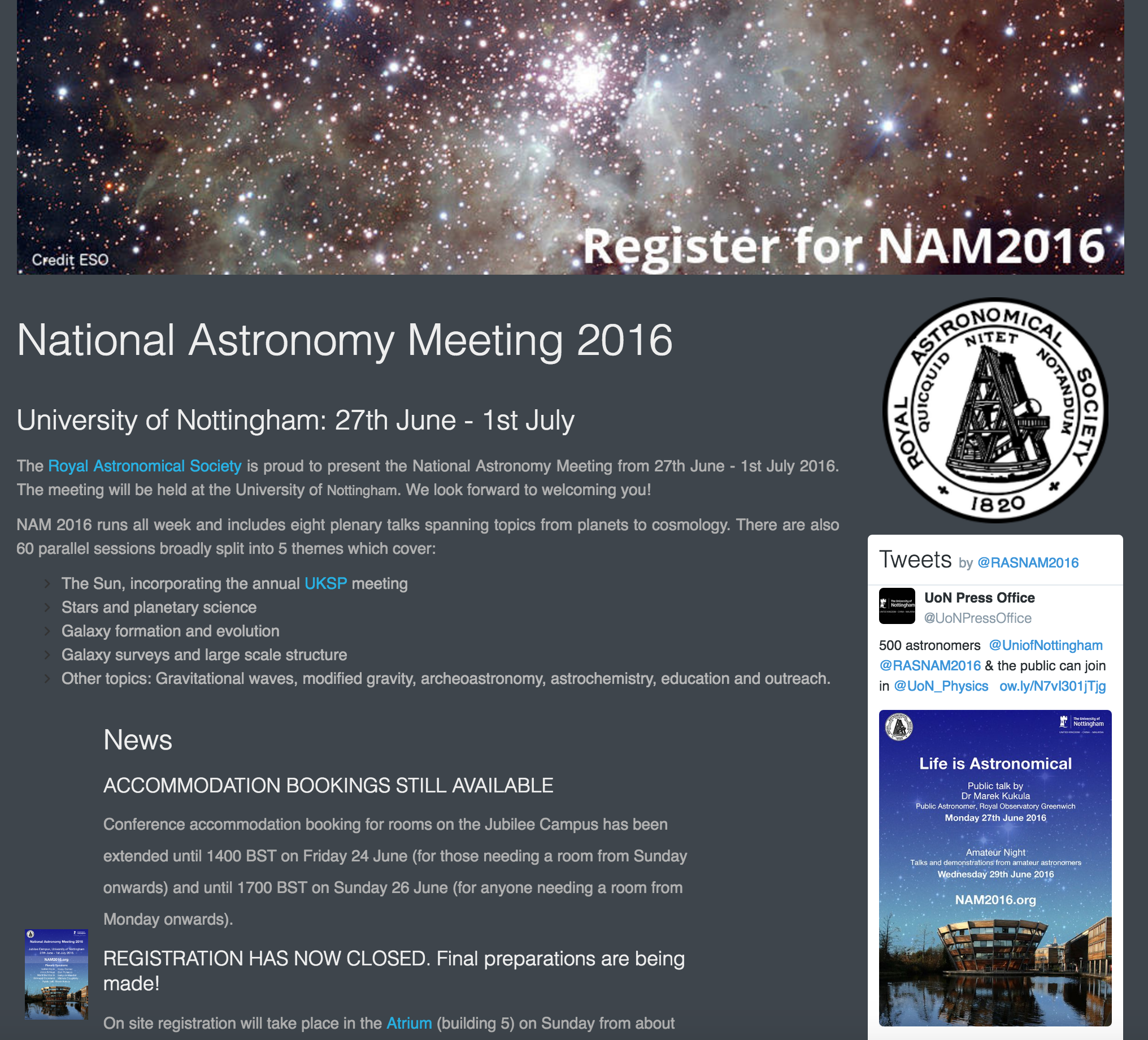
June 24, 2016, by Lindsay Brooke
Galaxy clusters – what are they?
Over 500 scientists are descending on the Jubilee Campus at The University of Nottingham next week to discuss the latest breakthroughs and discoveries in astronomy. Many of these astronomers will be discussing massive agglomerations of galaxies called clusters.
Dr Elizabeth Cooke and Kshitija Kelkar who studying distant clusters of galaxies here at the The University of Nottingham. Here they explain what galaxy clusters are.
Galaxy clusters are the densest regions of the Universe. They contain hundreds to thousands of galaxies sitting within massive systems of dark matter and surrounded by vast amounts of hot gas. These clusters are the perfect laboratories for a wide variety of astronomical studies. Astronomers have found that the oldest galaxies in the Universe live in the hearts of clusters, and interactions between cluster galaxies and the hot gas can affect the amount of stars that are able to form in these galaxies. They are also the perfect environment to study the mysterious substance that is dark matter, as it dominates the matter density of clusters.
To understand these processes requires studying both near-by clusters, which are near the end of their lives and have settled into equilibrium, as well as the most distant structures, where galaxies are forming and crashing together to build up the future cluster.
At the National Astronomy Meeting (NAM) in Nottingham, astronomers are gathering to discuss these giants of the cosmos. This meeting is bringing together experts on the near-by and distant Universe, as well as theoreticians who model and analyse galaxy clusters in exquisite simulations. By combining all of these fields, astronomers hope to make progress in understanding how these structures formed, evolved and what effects they had on the gas and galaxies within them.
Images are from ESO, NASA and the Illustris consortium
No comments yet, fill out a comment to be the first

![NAM_clusters_1[2] copy](https://blogs.nottingham.ac.uk/newsroom/files/2016/06/NAM_clusters_12-copy-300x300.jpg)
Leave a Reply